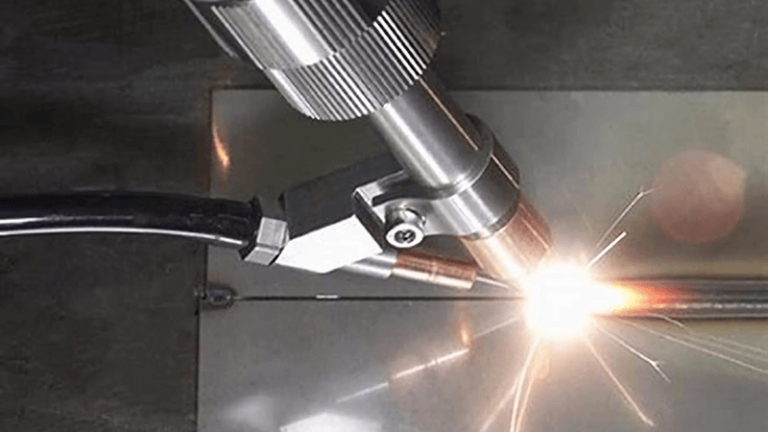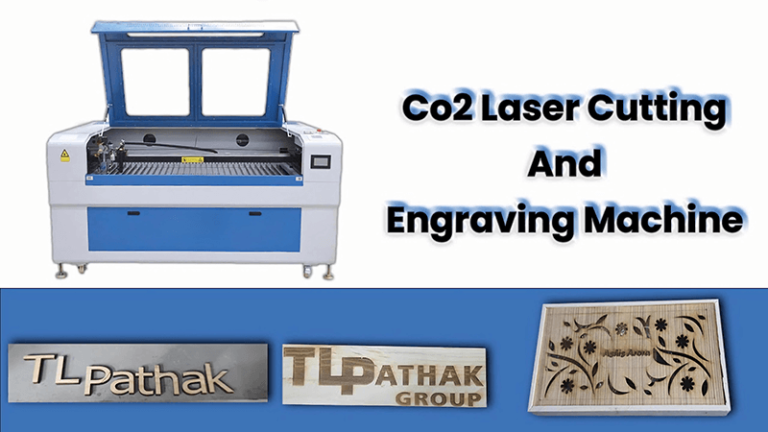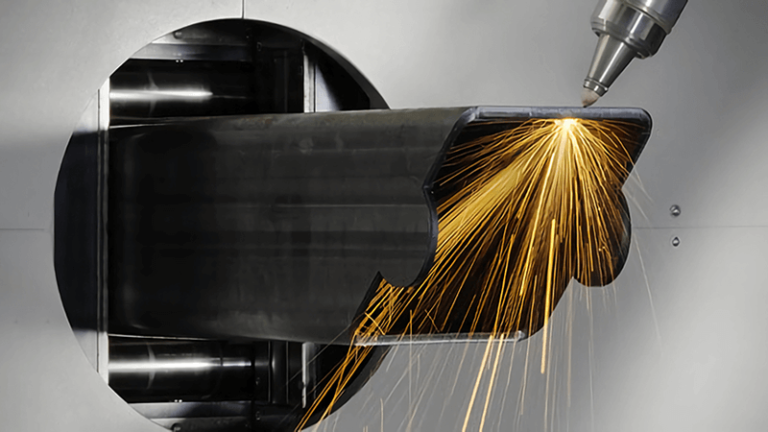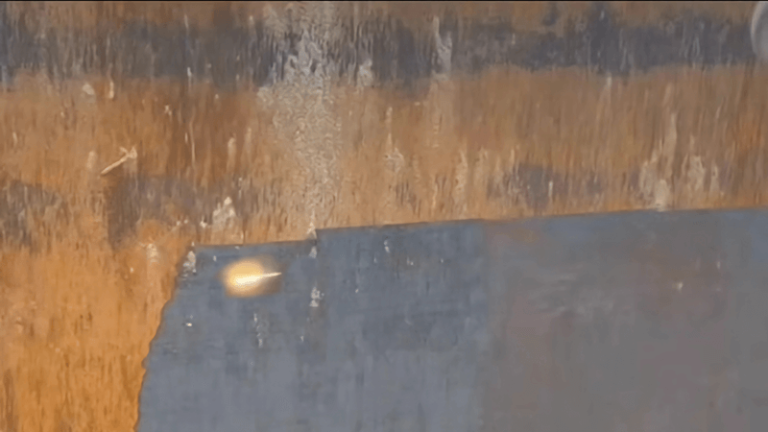Rust can quietly destroy the beauty and function of a vintage typewriter. But removing it the wrong way can cause even more damage. So how do we protect these delicate machines while getting rid of rust?
You can safely remove rust from antique typewriters using a pulsed laser cleaning machine. This method avoids abrasion, preserves original parts, and does not use harmful chemicals, making it ideal for delicate restorations.
When I started Kirin Laser, I worked with many clients in the restoration and collectibles space. One of the most memorable cases was when a customer brought in a rusty, antique typewriter. Traditional cleaning methods were too risky. But with our pulsed laser cleaning machine, we removed every bit of rust without touching the paint, decals, or mechanical parts. That’s the power of precision in every beam.

How to remove rust from an old typewriter?
Rust often hides in the tight corners of a typewriter. If we’re not careful, traditional cleaning tools might scratch the surface or ruin original parts. This is a common problem collectors face.
To remove rust from an old typewriter, a pulsed laser cleaning machine offers a non-contact solution that targets rust without damaging the underlying metal or paint.
Why pulsed laser cleaning is better than traditional methods
| Method | Pros | Cons |
|---|---|---|
| Sandblasting | Fast for heavy rust | Abrasive, risks damage |
| Chemical cleaners | Effective on surface rust | Toxic, hard to control |
| Manual brushing | Cheap | Time-consuming, imprecise |
| Pulsed laser cleaning1 | Precise, safe, no chemicals | Requires specialized equipment2 |
The pulsed laser beam works by delivering short bursts of energy. It heats and lifts the rust layer without touching the base metal. There's no grinding, no rubbing, and no fluids. With fine control over intensity and focus, I can clean tiny parts like typebars and ribbon holders safely.
I remember testing it on a 1930s Remington typewriter. The laser beam danced across the surface, stripping away rust from hard-to-reach spots. Not a single keycap was damaged. This approach is not only effective but brings peace of mind to collectors and restorers alike.

How do you clean an antique typewriter?
Antique typewriters are full of small parts—keys, springs, ribbons, metal arms. Cleaning them with water or chemicals can be dangerous. Even dusting needs care.
Use a pulsed laser cleaning machine for rust and heavy stains, followed by light manual cleaning for dust and grease. This two-step method keeps the typewriter’s integrity intact.
The cleaning workflow I use at Kirin Laser
-
Assessment
Check the typewriter’s material, paint condition, and rust level. -
Laser cleaning pass
Use our pulsed laser3 at low frequency to safely remove rust from metal parts. -
Detail cleaning
Wipe keytops and ribbon housing with a soft cloth. Avoid alcohol or water unless needed. -
Lubrication
Lightly oil moving joints without overdoing it.
| Step | Tool | Purpose |
|---|---|---|
| Laser pass | Pulsed laser | Remove rust without abrasion |
| Wipe down | Microfiber cloth | Remove dust, fingerprints |
| Oil | Precision oiler | Restore smooth movement |
At Kirin Laser, we’re careful with every job. We know these typewriters aren’t just machines—they’re history. One time, a client brought in an old Underwood model that had sat in a basement for decades. Rust had covered the frame, but the keys were still readable. After laser cleaning4, the transformation was stunning. No harsh scrubbing, no scratches. The machine looked like it was ready to type again.

How to remove rust from vintage steel?
Steel can be strong, but old steel rusts easily—especially in humid storage. When restoring antique machines, rust on steel frames and arms is a big challenge.
Laser cleaning can remove rust from vintage steel surfaces without scratching, overheating, or changing the material’s color or strength.
Why laser cleaning works so well on vintage steel
Laser rust removal uses selective absorption5. Rust absorbs laser energy more quickly than clean steel. That means the laser burns off the rust without heating the rest.
Key advantages:
- No mechanical stress: No need to clamp or sand the item.
- Precise targeting: Adjustable beam size helps reach tight spots.
- No color fading: Great for painted or polished steel surfaces.
| Feature | Laser Cleaning | Mechanical Cleaning |
|---|---|---|
| Surface Damage | None | High risk |
| Precision | Very high | Low |
| Speed | Medium | Varies |
| Chemical Use | None | Often required |
Once, I worked on a steel-framed industrial typewriter used in a print shop in the 1940s. The rust had settled deep into the foot brackets and arm joints. We used a mid-power pulsed laser head from our compact cleaning unit. It cleared the rust in under 15 minutes without leaving a trace. That machine is now displayed in a private museum.
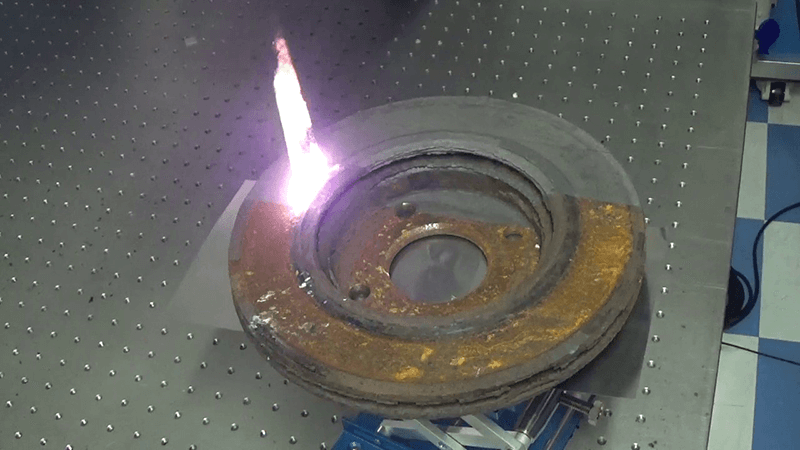
How to clean rust off antique keys?
Keys are the most visible and delicate part of a typewriter. Many have nickel or chrome plating. Rust removal here must be extra careful.
To clean rust off antique keys, use a low-energy laser beam for precise removal. Avoid scrubbing or using metal brushes, which can scratch or discolor keycaps.
Safe cleaning for fragile keytops
Typewriter keys often use mixed materials: metal rims, glass centers, and paint or ink lettering. The goal is to clean without damage.
Best Practices:
- Use a low-frequency pulsed laser6.
- Keep beam size small for precision.
- Use a low-speed setting to control heat.
| Key Part | Material | Cleaning Method |
|---|---|---|
| Rim | Nickel-plated steel | Laser, soft cloth |
| Center | Glass or plastic | Cloth only |
| Lettering | Ink or paint | Avoid contact, no laser |
When we tested our smallest pulsed laser unit on keytops, the results were amazing. The rust melted away from the edges, but the inked letters stayed crisp. This method gave our clients confidence to restore even the most fragile vintage pieces7 without fear of loss.
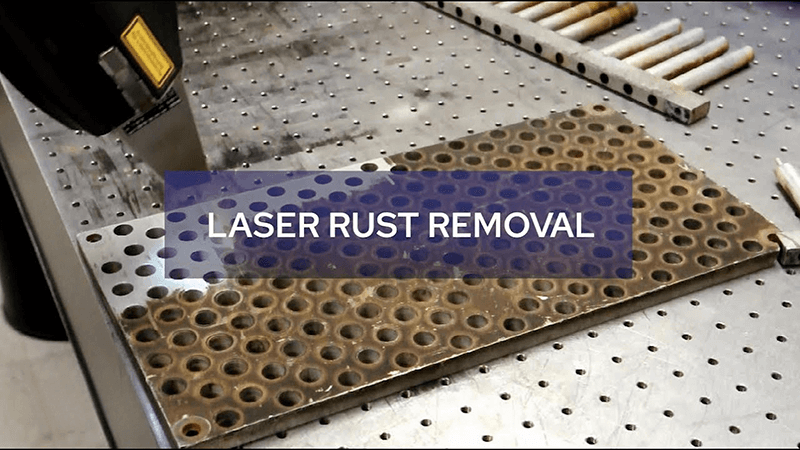
Conclusion
Restoring an antique typewriter isn't just about looks—it's about preserving history. Traditional methods can do more harm than good. At Kirin Laser, we believe precision is key. Our pulsed laser cleaning machines remove rust safely, gently, and completely. They protect original materials, avoid harsh chemicals, and deliver museum-quality results. Whether you're restoring a family heirloom or managing a professional restoration business, laser cleaning8 gives you a tool that matches your care and passion.
-
Explore the advantages of pulsed laser cleaning, including precision and safety, which make it a superior choice for restoration projects. ↩
-
Understanding the necessary equipment can help you prepare for effective pulsed laser cleaning, ensuring optimal results. ↩
-
Learn about the technology behind pulsed lasers and how they safely remove rust and contaminants from surfaces. ↩
-
Explore the advantages of laser cleaning, a modern technique that ensures effective rust removal without damaging the surface. ↩
-
Learn about selective absorption to see why it's crucial for effective laser cleaning of rust. ↩
-
Explore this link to understand the technology behind low-frequency pulsed lasers and their applications in delicate cleaning processes. ↩
-
Learn expert tips on restoring fragile vintage pieces safely, helping you maintain their value and beauty. ↩
-
Knowing the best laser cleaning machine and laser cleaning solutions from Kirin Laser, clicking this link to get the best product for your business. ↩


